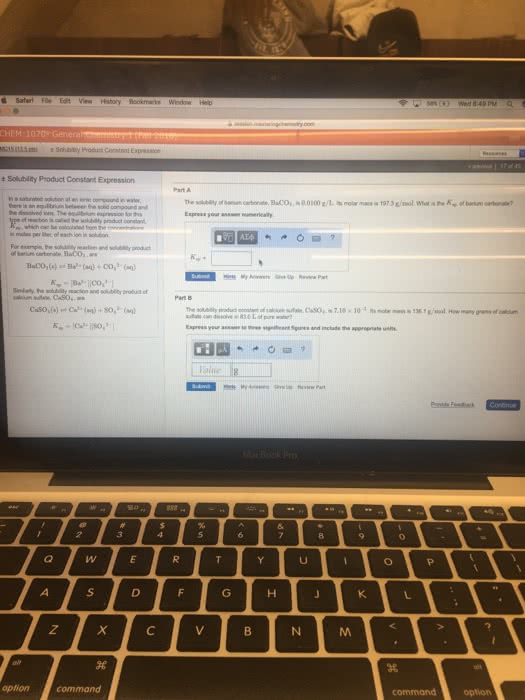CHEM 112 Lecture Notes - Lecture 1: Silver Sulfide, Magnesium Fluoride, Zinc Hydroxide
36 views3 pages
Document Summary
Hco3 - (aq) + h2o(l) co3 2- (aq) + h3o+ (aq) The solubility product, ksp, of a solute in aqueous solution is the equilibrium constant for the solubility equilibrium between an ionic solid and its dissolved component ions. Ex. for copper (i) sulfide cu2s: cu2 s(s) 2 cu+ (aq) + s2- (aq) Ksp = (acu + ) 2 (as 2- ) = 1. 3 x 10-36 (at 25 oc) The activity of cu2 s(s) is 1, as it is a pure solid. With very low concentrations of cu+ and s2- , we can replace the activities with molar concentrations: There is usually a dependence of ksp on the match between the size (ionic radius) of the ions in the salt. The better the match, the less soluble is the salt (packs together better in the solid for) The molar solubility, s, of a salt can be used to determine the value of ksp, and vice-versa.
Get access
Grade+20% off
$8 USD/m$10 USD/m
Billed $96 USD annually

Homework Help
Study Guides
Textbook Solutions
Class Notes
Textbook Notes
Booster Class
40 Verified Answers
Class+
$8 USD/m
Billed $96 USD annually

Homework Help
Study Guides
Textbook Solutions
Class Notes
Textbook Notes
Booster Class
30 Verified Answers
Related textbook solutions
Chemistry: Structure and Properties
2 Edition,
Tro
ISBN: 9780134293936
Basic Chemistry
5 Edition,
Timberlake
ISBN: 9780134138046
Principles of Chemistry Molecular Approach
4th Edition,
Tro
ISBN: 9780134112831
Principles of Chemistry Molecular Approach
3rd Edition, 2014
Tro
ISBN: 9780321971944
Chemistry: Structure and Properties
2nd Edition,
Tro
ISBN: 9780134293936
Chemistry: A Molecular Approach
3rd Edition,
Tro
ISBN: 9780321809247
Chemistry: A Molecular Approach
5th Edition,
Tro
ISBN: 9780134874371
Principles of Chemistry: A Molecular Approach
4th Edition,
Tro
ISBN: 9780134895741
Chemistry: The Central Science
14th Edition, 2017
Brown
ISBN: 9780134414232

